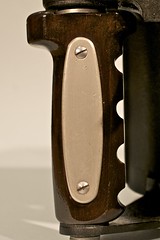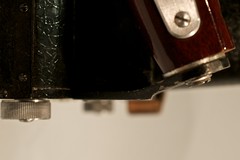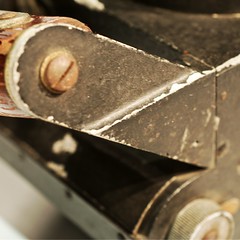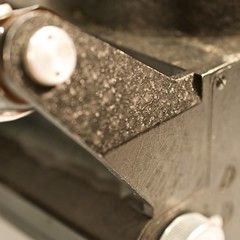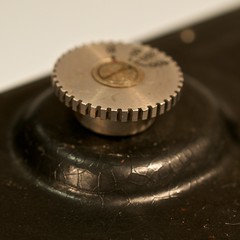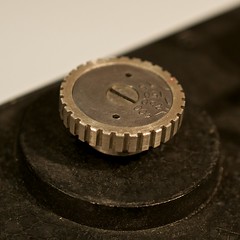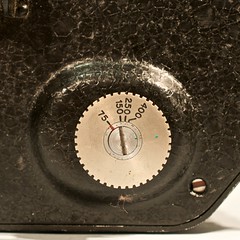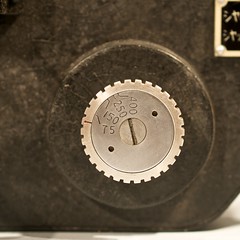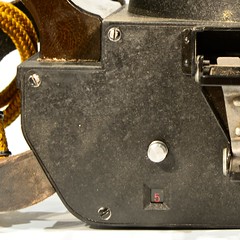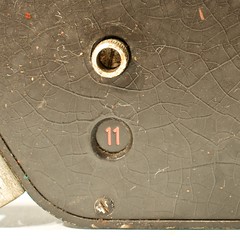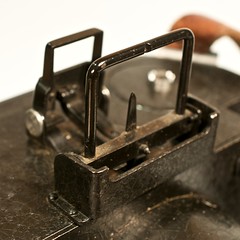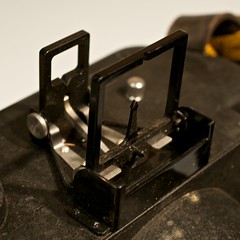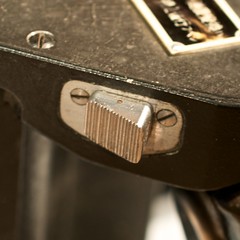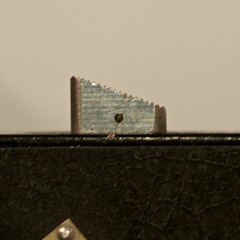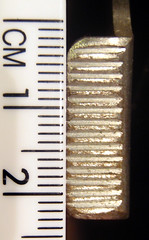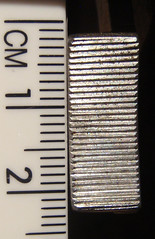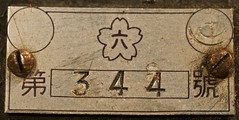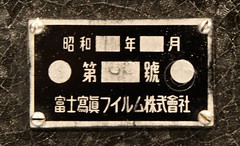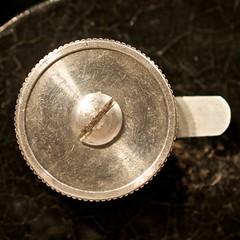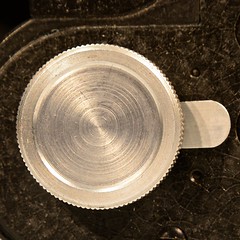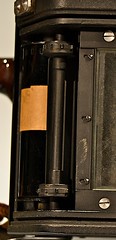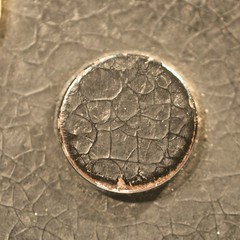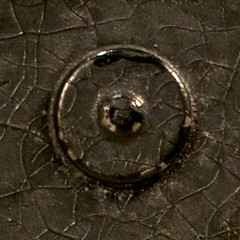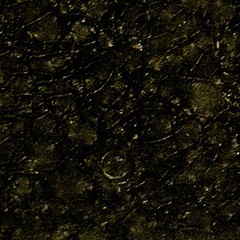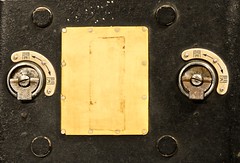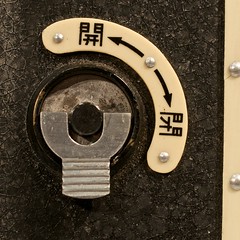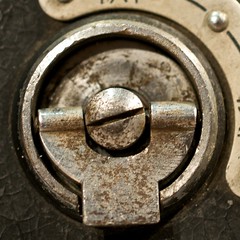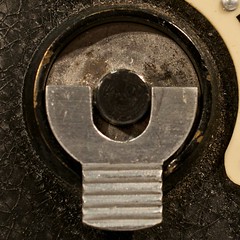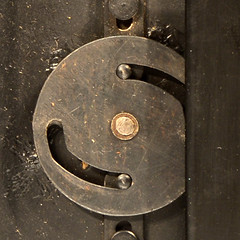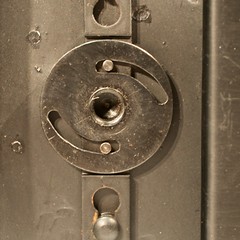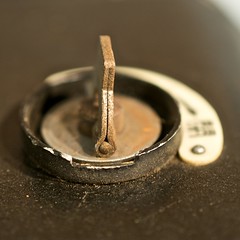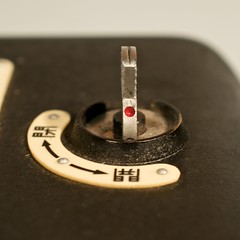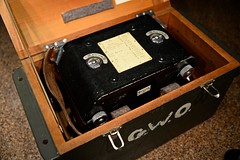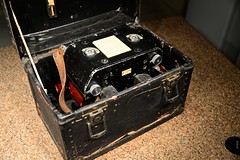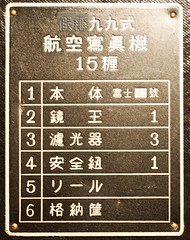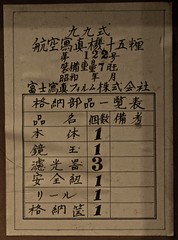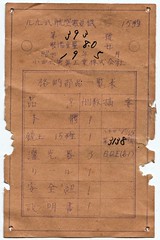Difference between revisions of "User:Heritagefutures/WorkSpace"
(→Navy Type 99 Handheld Aerial Camera) |
|||
| Line 55: | Line 55: | ||
|image_rights= with permission | |image_rights= with permission | ||
}} | }} | ||
| − | The '''Type 99 Handheld Aerial Camera (15cm)''' (九九式航空写真機十五糎) was produced for the Japanese Navy by [[Konica|Rokuoh-sha]]( (六桜社) ) / [[Konica|Konishiroku]]) (小西六) and also by [[Fuji|Fuji Shashin Film]] (富士寫眞フィルム株式會社)<REF name="JNP p8"><i>Japanese Naval Photography</i>. Compiled by Lt W.D.Hedden, USNR, with LtCdr G.Z.Dimitroff USNR and Lt(jg) W.A. Seymour, USNR. Intelligence Targets Japan (DNI) of 4 September 1945. Facicle A-1, Target A-39. U.S. Naval Technical Mission to Japan. December 1945. pp.8-9</REF><REF>See also the examples depicted in this article</ref>As was usual practice with the Japanese military ordnance of the time, the name "type 99" stands for year 2599 in the Japanese imperial calendar, i.e. 1939. | + | The '''Type 99 Handheld Aerial Camera (15cm)''' (九九式航空写真機十五糎) was produced for the Japanese Navy by [[Konica|Rokuoh-sha]]( (六桜社) ) / [[Konica|Konishiroku]]) (小西六) and also by [[Fuji|Fuji Shashin Film]] (富士寫眞フィルム株式會社)<REF name="JNP p8"><i>Japanese Naval Photography</i>. Compiled by Lt W.D.Hedden, USNR, with LtCdr G.Z.Dimitroff USNR and Lt(jg) W.A. Seymour, USNR. Intelligence Targets Japan (DNI) of 4 September 1945. Facicle A-1, Target A-39. U.S. Naval Technical Mission to Japan. December 1945. pp.8-9.</REF><REF>See also the examples depicted in this article</ref>As was usual practice with the Japanese military ordnance of the time, the name "type 99" stands for year 2599 in the Japanese imperial calendar, i.e. 1939. |
The total number of cameras produced is unknown at this point in time. A report from the U.S. Naval Technical Mission to Japan, written in December 1945, gives detailed production figures, they refer to the Konishiroku-built Navy Type 99 Handheld Aerial Cameras only (Table 1). The total production was higher, as the numbers of cameras made by [[Fuji]] are unknown. A Japanese source claims that the introduction of the camera was plagued with reliability problems, and it only went in full service around 1943.<REF name="Wetwing Aerial"> [http://www.wetwing.com/aerialcamera/aerialcameras/cameras.html Aerial camera types] at Wetwing Aerial Camera.</REF> This seems to be borne out by the statistics provided in the U.S. report that show that production started in 1942 and was ramped up in 1943, peaking in 1944. The dramatic drop of actual deliveries compared or orders in 1945 shows the impact of the Allied bombing on specialised camera production. | The total number of cameras produced is unknown at this point in time. A report from the U.S. Naval Technical Mission to Japan, written in December 1945, gives detailed production figures, they refer to the Konishiroku-built Navy Type 99 Handheld Aerial Cameras only (Table 1). The total production was higher, as the numbers of cameras made by [[Fuji]] are unknown. A Japanese source claims that the introduction of the camera was plagued with reliability problems, and it only went in full service around 1943.<REF name="Wetwing Aerial"> [http://www.wetwing.com/aerialcamera/aerialcameras/cameras.html Aerial camera types] at Wetwing Aerial Camera.</REF> This seems to be borne out by the statistics provided in the U.S. report that show that production started in 1942 and was ramped up in 1943, peaking in 1944. The dramatic drop of actual deliveries compared or orders in 1945 shows the impact of the Allied bombing on specialised camera production. | ||
| Line 71: | Line 71: | ||
The camera is loaded with 9cm wide<REF name="JNP p8" /> perforated film rolls. The picture format is about 7.5×10cm.<REF name="Iwama"> Iwama Tomohisa (岩間倶久). "Konica history 8. Konishiroku no gun'yō kamera." (Konica history 8. 小西六の軍用カメラ. Konishiroku military cameras.) Kamera Rebyū: Kurashikku Kamera Senka (カメラレビュー クラシックカメラ専科) / Camera Review: All about Historical Cameras no.10, September 1987. No ISBN number. Konishiroku kamera no rekishi (小西六カメラの歴史, special issue on Konishiroku). Pp.54–5.</ref><ref>[http://www.wetwing.com/aerialcamera/aerialcameras/cameras.html this page] at Wetwing Aerial Camera, and ''Japanese Naval Photography'', p.11, all say 7.5×10cm. [http://www.geocities.jp/kyo_oomiya/99cam.html This page] at Kore Nāni says 70×100mm, and {{SUG}}, item 6010, says 72×98mm. </REF> The film strips are 2.3 metres in length,<REF name="JNP p8" /><REF name="JNP p18"> ''Japanese Naval Photography'', p.18.</REF> allowing for 20 exposures.<REF>The camera pictured in [http://www.geocities.jp/kyo_oomiya/99cam.html this page] at Kore Nāni clearly shows an exposure counter graduated from 1 to 20. ''Japanese Naval Photography'', p.11, repeated in [http://www.airrecce.co.uk/cameras/Jap_cameras.html this page] at Airrecce, also mentions 20 exposures. [http://www.wetwing.com/aerialcamera/aerialcameras/cameras.html This page] at Wetwing Aerial Camera, mentions 6 or 10-exposure film strips, perhaps by mistake. {{SUG}}, item 6010, says that the camera takes glass plates and sheetfilm, but this is obviously a mistake. </REF> | The camera is loaded with 9cm wide<REF name="JNP p8" /> perforated film rolls. The picture format is about 7.5×10cm.<REF name="Iwama"> Iwama Tomohisa (岩間倶久). "Konica history 8. Konishiroku no gun'yō kamera." (Konica history 8. 小西六の軍用カメラ. Konishiroku military cameras.) Kamera Rebyū: Kurashikku Kamera Senka (カメラレビュー クラシックカメラ専科) / Camera Review: All about Historical Cameras no.10, September 1987. No ISBN number. Konishiroku kamera no rekishi (小西六カメラの歴史, special issue on Konishiroku). Pp.54–5.</ref><ref>[http://www.wetwing.com/aerialcamera/aerialcameras/cameras.html this page] at Wetwing Aerial Camera, and ''Japanese Naval Photography'', p.11, all say 7.5×10cm. [http://www.geocities.jp/kyo_oomiya/99cam.html This page] at Kore Nāni says 70×100mm, and {{SUG}}, item 6010, says 72×98mm. </REF> The film strips are 2.3 metres in length,<REF name="JNP p8" /><REF name="JNP p18"> ''Japanese Naval Photography'', p.18.</REF> allowing for 20 exposures.<REF>The camera pictured in [http://www.geocities.jp/kyo_oomiya/99cam.html this page] at Kore Nāni clearly shows an exposure counter graduated from 1 to 20. ''Japanese Naval Photography'', p.11, repeated in [http://www.airrecce.co.uk/cameras/Jap_cameras.html this page] at Airrecce, also mentions 20 exposures. [http://www.wetwing.com/aerialcamera/aerialcameras/cameras.html This page] at Wetwing Aerial Camera, mentions 6 or 10-exposure film strips, perhaps by mistake. {{SUG}}, item 6010, says that the camera takes glass plates and sheetfilm, but this is obviously a mistake. </REF> | ||
| − | The camera has a folding frame finder at the top, and wooden handles on both sides of the body. The shutter is of the focal-plane type, with horizontally running curtains. It normally gives 1/75, 1/150, 1/250 and 1/400 speeds,<REF> [http://www.geocities.jp/kyo_oomiya/99cam.html This page] at Kore Nāni, and specifications in {{SUG}}, item 6010. </REF> selected by a wheel at the top. (The American report mentions 1/25 to 1/500 speeds, probably by mistake.)<REF> | + | The camera has a folding frame finder at the top, and wooden handles on both sides of the body. The shutter is of the focal-plane type, with horizontally running curtains. It normally gives 1/75, 1/150, 1/250 and 1/400 speeds,<REF> [http://www.geocities.jp/kyo_oomiya/99cam.html This page] at Kore Nāni, and specifications in {{SUG}}, item 6010. </REF> selected by a wheel at the top. (The American report mentions 1/25 to 1/500 speeds, probably by mistake.)<REF name="JNP p11"> 'Japanese Naval Photography' (''op. cit.''), p.11. </REF> The main release has the shape of a trigger, actioned by the right index. The film is advanced and the shutter is wound by turning the right-hand handle by 90 degrees twice.<REF> [http://www.geocities.jp/kyo_oomiya/99cam.html This page] at Kore Nāni. </REF><REF name="Wetwing Aerial" /> The camera has an automatic exposure counter. The back is fully removable and is locked by two keys, with open (開) and close (閉) indications. |
| − | |||
| − | |||
| + | At least two versions were made, reputedly one for aerial use only and the other for both aerial and terrestrial use.<REF name="Wetwing Aerial" /> The American report mentions two variants distinguished by the lens maximal aperture, either f/3.5 or f/4.5, saying that the latter was more common as the faster lens did not provide advantages that warranted the higher cost of production.<REF name="JNP p10"> 'Japanese Naval Photography' (''op. cit.''), p.10.</REF> | ||
==Surviving Examples== | ==Surviving Examples== | ||
A number of examples have appeared in recent years, which allow the identification of two types (Rokuoh Sha and Fuji) and some variants within. The distinguishing criteria are [[Navy Type 99 Aerial Camera Distinguishing Characteristics | set out on this seperate page]]. | A number of examples have appeared in recent years, which allow the identification of two types (Rokuoh Sha and Fuji) and some variants within. The distinguishing criteria are [[Navy Type 99 Aerial Camera Distinguishing Characteristics | set out on this seperate page]]. | ||
| + | |||
| + | Variations have been observed in the surviving camera bodies, but no clear pattern has been identified.<REF> Examples pictured in [http://www.geocities.jp/kyo_oomiya/99cam.html this page] at Kore Nāni, in [http://www.wetwing.com/aerialcamera/aerialcameras/cameras.html this page] at Wetwing Aerial Camera, in {{SUG}}, item 6010, and in Iwama, p.54 of {{KKS}} no.10. </REF> | ||
| + | |||
===Cameras manufactured by Rokuoh Sha / Konishiroku=== | ===Cameras manufactured by Rokuoh Sha / Konishiroku=== | ||
Revision as of 04:37, 17 July 2012
Contents
The Navy Field Camera (21cm & 36cm) (¶¶¶) was produced for the Japanese Navy by Rokuoh-sha( (六桜社) ) / Konishiroku) (小西六)[1]
f/4.5 21cm or 36cm , plate size 12 x 16.5 (nominally)
discuss relationship to Army camera
A report from the U.S. Naval Technical Mission to Japan, written in December 1945, gives detailed production figures (Table 1), showing that the camera was introduced in 1942.[1] The dramatic drop of actual deliveries compared or orders in 1945 shows the impact of the Allied bombing on specialised camera production.
Table 1 Production volume of Navy Field Cameras for the period 1941-1945[1]
| Year | 1941 | 1942 | 1943 | 1944 | 1945 | Total |
| 21cm model | ||||||
| Ordered | — | 150 | 150 | 300 | 300 | 900 |
| Delivered | — | 127 | 28 | 293 | 20 | 468 |
| 36cm model | ||||||
| Ordered | — | 80 | 100 | 120 | 120 | 420 |
| Delivered | — | 55 | 124 | 3 | — | 182 |
Army Type B Field Camera
The Army Type B Field Camera (21cm) (¶¶¶) was produced for the Japanese Army by Rokuoh-sha( (六桜社) ) / Konishiroku) (小西六)[1]
discuss relationship to Navy camera
A report from the U.S. Naval Technical Mission to Japan, written in December 1945, gives detailed production figures (Table 1), showing that the camera was introduced in 1941.[1] f/4.5 21cm , plate size 12 x 16.5 (nominally)
Table 1 Production volume of Army Type B Field Camera for the period 1941-1945[1]
| Year | 1941 | 1942 | 1943 | 1944 | 1945 | Total |
| Ordered | 75 | 125 | 50 | 50 | — | 300 |
| Delivered | 50 | 100 | — | 100 | — | 250 |
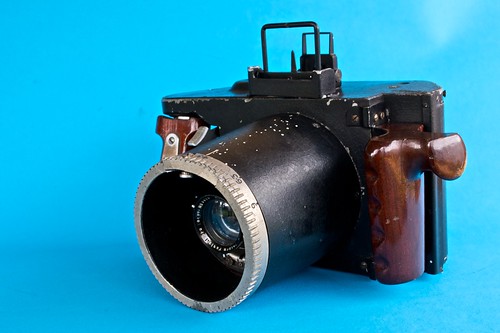
|
| Navy Type 99 Handheld Aerial Camera image by Dirk HR Spennemann (Image rights) |
The Type 99 Handheld Aerial Camera (15cm) (九九式航空写真機十五糎) was produced for the Japanese Navy by Rokuoh-sha( (六桜社) ) / Konishiroku) (小西六) and also by Fuji Shashin Film (富士寫眞フィルム株式會社)[1][2]As was usual practice with the Japanese military ordnance of the time, the name "type 99" stands for year 2599 in the Japanese imperial calendar, i.e. 1939.
The total number of cameras produced is unknown at this point in time. A report from the U.S. Naval Technical Mission to Japan, written in December 1945, gives detailed production figures, they refer to the Konishiroku-built Navy Type 99 Handheld Aerial Cameras only (Table 1). The total production was higher, as the numbers of cameras made by Fuji are unknown. A Japanese source claims that the introduction of the camera was plagued with reliability problems, and it only went in full service around 1943.[3] This seems to be borne out by the statistics provided in the U.S. report that show that production started in 1942 and was ramped up in 1943, peaking in 1944. The dramatic drop of actual deliveries compared or orders in 1945 shows the impact of the Allied bombing on specialised camera production.
Table 1 Production volume of Navy Type 99 Handheld Aerial Camera for the period 1941-1945[1]
| Year | 1941 | 1942 | 1943 | 1944 | 1945 | Total |
| Ordered | _ | 50 | 700 | 1416 | 1440 | 3606 |
| Delivered | _ | 50 | 600 | 1231 | 65 | 1946 |
The camera is loaded with 9cm wide[1] perforated film rolls. The picture format is about 7.5×10cm.[4][5] The film strips are 2.3 metres in length,[1][6] allowing for 20 exposures.[7]
The camera has a folding frame finder at the top, and wooden handles on both sides of the body. The shutter is of the focal-plane type, with horizontally running curtains. It normally gives 1/75, 1/150, 1/250 and 1/400 speeds,[8] selected by a wheel at the top. (The American report mentions 1/25 to 1/500 speeds, probably by mistake.)[9] The main release has the shape of a trigger, actioned by the right index. The film is advanced and the shutter is wound by turning the right-hand handle by 90 degrees twice.[10][3] The camera has an automatic exposure counter. The back is fully removable and is locked by two keys, with open (開) and close (閉) indications.
At least two versions were made, reputedly one for aerial use only and the other for both aerial and terrestrial use.[3] The American report mentions two variants distinguished by the lens maximal aperture, either f/3.5 or f/4.5, saying that the latter was more common as the faster lens did not provide advantages that warranted the higher cost of production.[11]
Surviving Examples
A number of examples have appeared in recent years, which allow the identification of two types (Rokuoh Sha and Fuji) and some variants within. The distinguishing criteria are set out on this seperate page.
Variations have been observed in the surviving camera bodies, but no clear pattern has been identified.[12]
Cameras manufactured by Rokuoh Sha / Konishiroku
It is highly probable that the design originated by Rokuoh Sha / Konishiroku which had designed and manufactured several other cameras for the Japanese military. Inspection of a range of models has shown the existence of at least three variants:
- Variant a) early
- Variant b) late
- Variant c) late
Documented Lens Options
The lens is attached to the camera by four screws and has the standard three prongs at the front for filter attachment. The aperture is controlled by a large ring at the front of the outer lens cone, connected to the lens diaphragm via a lever.
Cameras manufactured by Fuji
Links
- Distinguishing Characteristics of Navy Type 99 Aerial Cameras manufactured by Rokuoh Sha and by Fuji
- Description of Navy Type 99 Aerial Camera Storage Boxes and Packing Lists
Notes
- ↑ 1.0 1.1 1.2 1.3 1.4 1.5 1.6 1.7 1.8 1.9 Japanese Naval Photography. Compiled by Lt W.D.Hedden, USNR, with LtCdr G.Z.Dimitroff USNR and Lt(jg) W.A. Seymour, USNR. Intelligence Targets Japan (DNI) of 4 September 1945. Facicle A-1, Target A-39. U.S. Naval Technical Mission to Japan. December 1945. pp.8-9 Cite error: Invalid
<ref>tag; name "JNP p8" defined multiple times with different content Cite error: Invalid<ref>tag; name "JNP p8" defined multiple times with different content - ↑ See also the examples depicted in this article
- ↑ 3.0 3.1 3.2 Aerial camera types at Wetwing Aerial Camera.
- ↑ Iwama Tomohisa (岩間倶久). "Konica history 8. Konishiroku no gun'yō kamera." (Konica history 8. 小西六の軍用カメラ. Konishiroku military cameras.) Kamera Rebyū: Kurashikku Kamera Senka (カメラレビュー クラシックカメラ専科) / Camera Review: All about Historical Cameras no.10, September 1987. No ISBN number. Konishiroku kamera no rekishi (小西六カメラの歴史, special issue on Konishiroku). Pp.54–5.
- ↑ this page at Wetwing Aerial Camera, and Japanese Naval Photography, p.11, all say 7.5×10cm. This page at Kore Nāni says 70×100mm, and Sugiyama, item 6010, says 72×98mm.
- ↑ Japanese Naval Photography, p.18.
- ↑ The camera pictured in this page at Kore Nāni clearly shows an exposure counter graduated from 1 to 20. Japanese Naval Photography, p.11, repeated in this page at Airrecce, also mentions 20 exposures. This page at Wetwing Aerial Camera, mentions 6 or 10-exposure film strips, perhaps by mistake. Sugiyama, item 6010, says that the camera takes glass plates and sheetfilm, but this is obviously a mistake.
- ↑ This page at Kore Nāni, and specifications in Sugiyama, item 6010.
- ↑ 'Japanese Naval Photography' (op. cit.), p.11.
- ↑ This page at Kore Nāni.
- ↑ 'Japanese Naval Photography' (op. cit.), p.10.
- ↑ Examples pictured in this page at Kore Nāni, in this page at Wetwing Aerial Camera, in Sugiyama, item 6010, and in Iwama, p.54 of Kurashikku Kamera Senka no.10.
- ↑ On record are Hexar sn#3050 (body #344)(Koni very messy alignment); Hexar #3910 (body #1009)
- ↑ See also example pictured in this page at Kore Nāni.
- ↑ On record are Hexar sn#4152 (on body #1185); Hexar #4098 (on body #1257);
A number of criteria allow a collector to distinguish between the Type 99 Handheld Aerial Cameras (15cm) (九九式航空写真機十五糎) built by Rokuoh-sha( (六桜社) ) / Konishiroku) (小西六) and those built by Fuji Shashin Film (富士寫眞フィルム株式會社). These criteria, which have been developed based on an examination of surviving cameras, are set out in detail in Table 1 below.[1] When considering the back, it should be noted that the back is fully detachable and that the serial numbers of body and back should match. Among many of the observed cameras the back does not originally belong the camera, but was swapped around in the past.[2]
Table 1 Distinguishing Characteristics
| Criterion | Rokuoh Sha | Fuji | ||||||||||
| GENERAL | ||||||||||||
| Front Cone | Held by visible screws | No visible screws | ||||||||||
| Metal plate on shutter advance grip (front) | Vertical grooves |
|
Smooth |
| ||||||||
| Metal plate on shutter advance grip (back) | Top angular |
|
Top oval |
| ||||||||
| Bottom of shutter advance grip attachment | angled with step |
|
angled but smooth |
| ||||||||
| TOP PLATE | ||||||||||||
| Shutter Speed knob | Thin but broad knob lifts up, with small central indicator |
|
Thick, but narrow external ring lifts up, large central indicator |
| ||||||||
| Shutter Speed Knob Base | Raised, oval |
|
Raised, circular |
| ||||||||
| Film Counter (position) | In line with the angular indentation, a) counter window at front b) counter window at back |
|
Shifted to the right of the angular indentation |
| ||||||||
| Film Counter Window | Round |
|
Square |
| ||||||||
| Viewfinder (fold-up) | Protrudes on front plate, front frame has rounded sections, 2 1/8" x 1 3/4", back frame 1 1/4" x 1 1/2" |
|
Flush with front plate, front frame has angular sections, 2" x 1 7/8", back frame 1" x 1 1/2" |
| ||||||||
| Data Tag on top left | no | yes |
| |||||||||
| Thumb release for film advance lock | Curved |
|
Triangular |
| ||||||||
| Surface of shutter release trigger |
Finger surface shows wide grooves (8 grooves/10mm) |
|
Finger surface shows fine grooves (15 grooves/10mm) |
| ||||||||
| BOTTOM PLATE | ||||||||||||
| Serial number tag | Tag with RokuohSha Symbol a) Aluminium b) White Bakelite |
|
Black with nº, type and Showa |
| ||||||||
| Film Spool Lock | Knob with central screw |
|
Knob without central screw |
| ||||||||
| INTERNALS | ||||||||||||
| Advance Cogs & Spool | silver |
|
black |
| ||||||||
| BACK (REMOVEABLE) (see comment in paragraph preceding the table) | ||||||||||||
| Back | a) Four raised circles in rectangle b) Four raised circles in rectangle with central dome |
|
Flat throughout |
| ||||||||
| Note Slate | Three quarters (3" x 2 3/8") |
|
Square (3" x 3") |
| ||||||||
| Closing directions tags | a) Aluminium b) White Bakelite |
|
White Bakelite |
| ||||||||
| Closing levers | Surface smooth, screw in centre |
|
Surface grooved bolt in centre |
| ||||||||
| Lock mechanisms discs | Large (ø 1 3/8") |
|
Small (ø 1") |
| ||||||||
| Closing lever surround | a) Coned and bevelled b) Straight |
|
Coned |
| ||||||||
| images by Dirk HR Spennemann (Image rights) | ||||||||||||
Notes
As was custom with all Japanese military camera gear, the the Type 99 Handheld Aerial Cameras (15cm) (九九式航空写真機十五糎) were supplied as a set complete with all the required paraphernalia (such as filters, additional magazines etc).
Storage Boxes
Table 1 Shape of boxes
| Type | Manufacturer (of camera) |
Serial number (range) Date (if known) |
Material | Dimensions (L x B x H) | External View | Internal View | ||||
| Type 1 | Fuji Shashin Film | 62 | Plywood with leather covering |
|
| |||||
| Type 2 | Rokuoh-sha | sn#1257 | Wood |
|
| |||||
| Type 3 | Rokuoh-sha | sn#393 | Plywood with leather covering |
|
| |||||
| images by Dirk HR Spennemann (Image rights) | ||||||||||
Packaging Lists
Table 2 Packing Labels (Lists of Contents)
| Type | Manufacturer of Camera | Serial number (range) | Material | Date (if known) | |||
| Type 1 | Fuji Shashin Film | 62 | Aluminium |
| |||
| Type 2 | Rokuoh-sha | Paper, printed Type-set Kanji Characters |
|||||
| Type 3 | Rokuoh-sha | Paper, printed Hand-written Kanji Characters |
122 |
| |||
| Type 4 | Rokuoh-sha | 393 | Paper, ammonia-printed ('diazo') Hand-written Kanji Characters |
1944 (May) |
| ||
| images by Dirk HR Spennemann (Image rights) | |||||||

